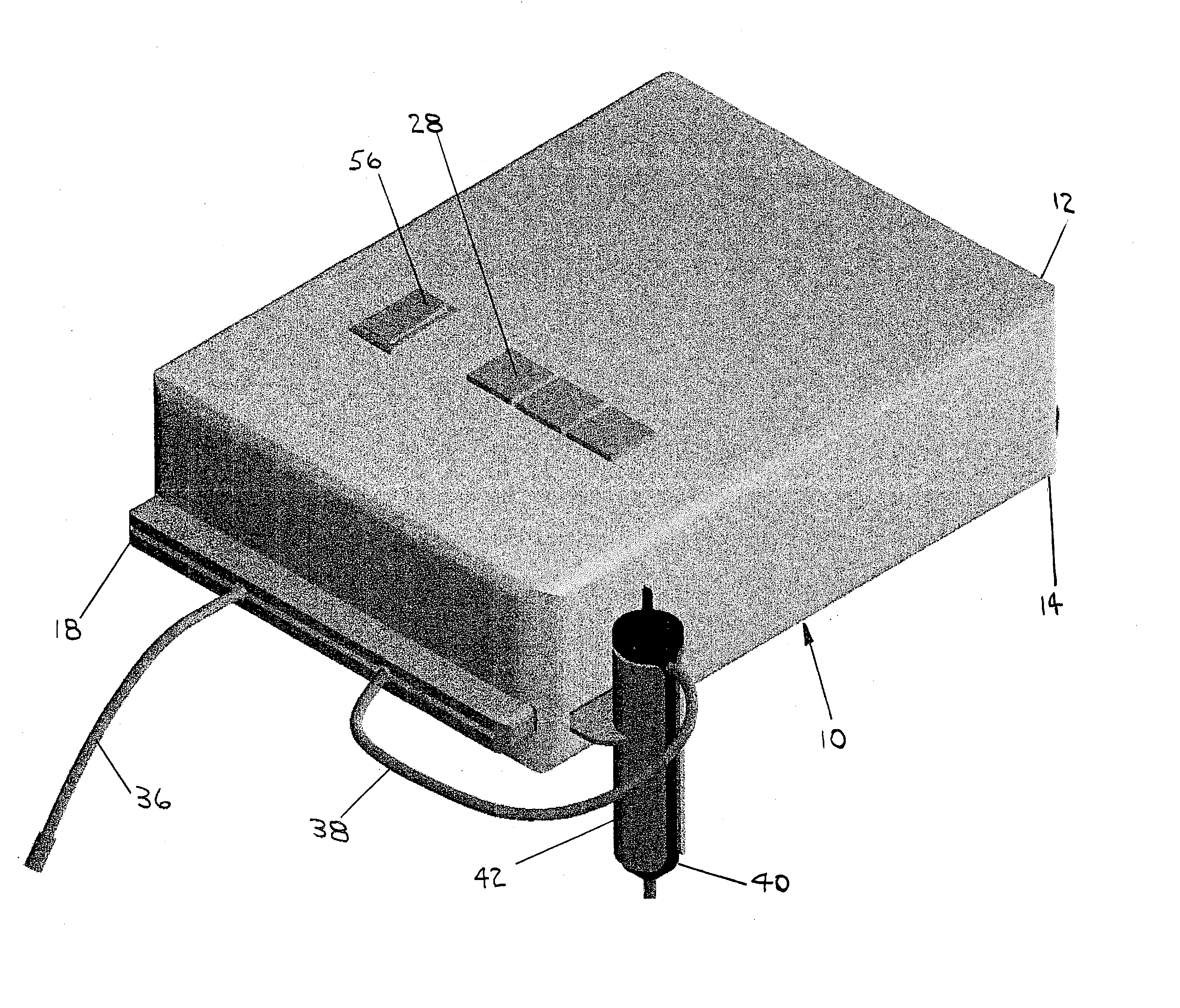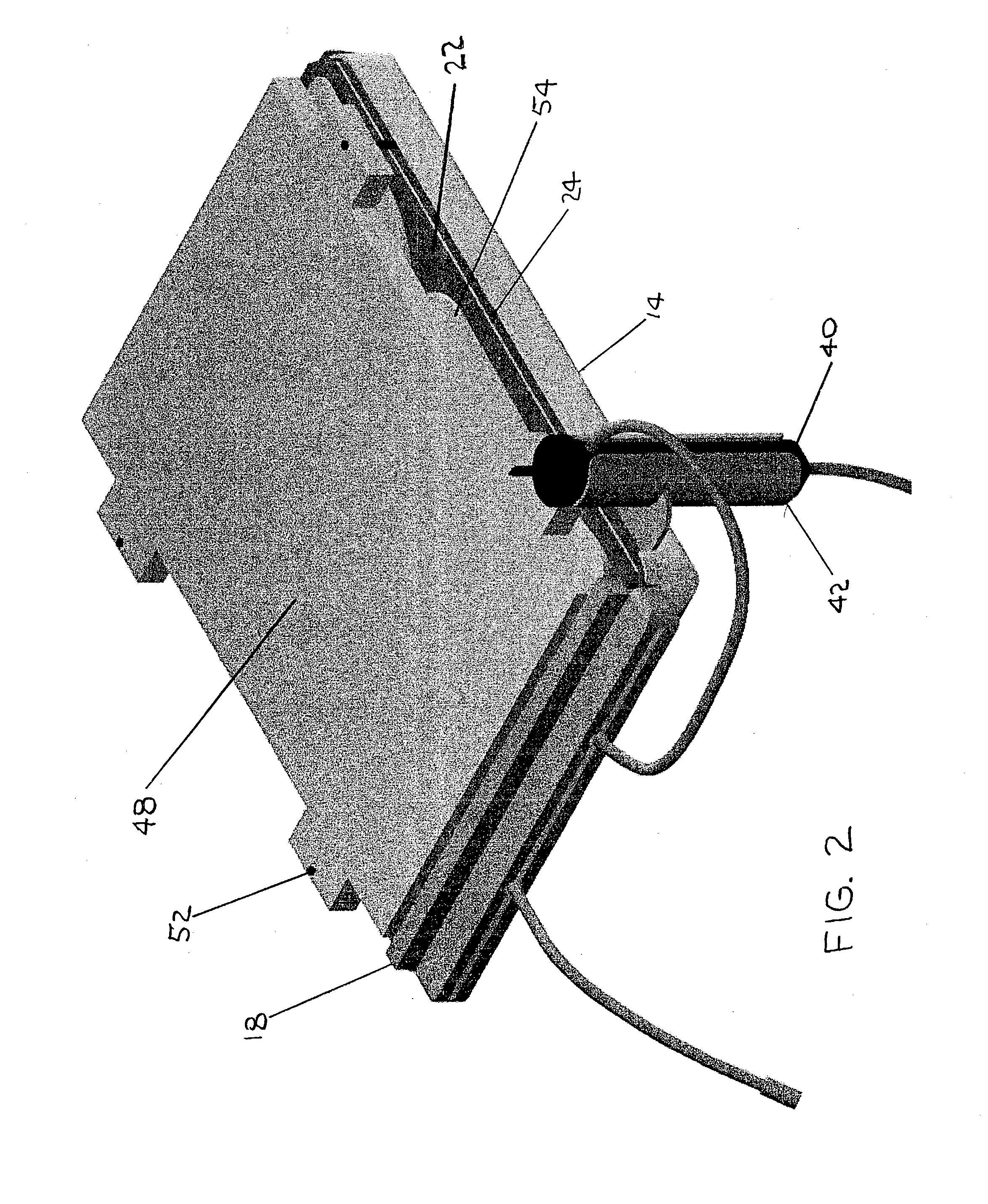Convection blood warming system with disposable flattened tube envelope incorporating paperboard needle for inserting envelope between heating plates and employing active and passive insulation of outlet flow path to provide normothermic fluid at zero to 600 milliliters per minute
- Summary
- Abstract
- Description
- Claims
- Application Information
AI Technical Summary
Benefits of technology
Problems solved by technology
Method used
Image
Examples
Embodiment Construction
[0053] FIG. 1 shows the present blood warmer invention 10 with front case 12 and rear case 14 made from commercially available aluminum box enclosures about 0.06 inch thick. Disposable heat exchanging blood warming envelope 16 passes through inserter guide 18. Disposable heat exchanging blood warming envelope 16 lies between front heat transfer plate 22 and rear heat transfer plate 24 and is hidden from view in this drawing. Paperboard inserter 26 is attached to the rightmost end of disposable heat exchanging blood warming envelope 16 (FIG. 4), and is used to insert disposable heat exchanging blood warming envelope 16 between front heat transfer plate 22 and rear heat transfer plate 24, pulling it into operating position like a needle pulls thread.
[0054] Temperature controller 28 is seen protruding through front case 12 and is activated by power switch 56. Thermistor inputs from several locations on front heat transfer plate 22 and rear heat transfer plate 24 allow close temperature...
PUM
 Login to View More
Login to View More Abstract
Description
Claims
Application Information
 Login to View More
Login to View More - R&D
- Intellectual Property
- Life Sciences
- Materials
- Tech Scout
- Unparalleled Data Quality
- Higher Quality Content
- 60% Fewer Hallucinations
Browse by: Latest US Patents, China's latest patents, Technical Efficacy Thesaurus, Application Domain, Technology Topic, Popular Technical Reports.
© 2025 PatSnap. All rights reserved.Legal|Privacy policy|Modern Slavery Act Transparency Statement|Sitemap|About US| Contact US: help@patsnap.com



